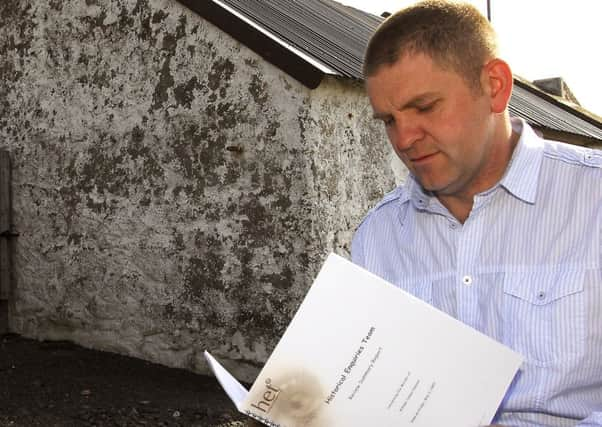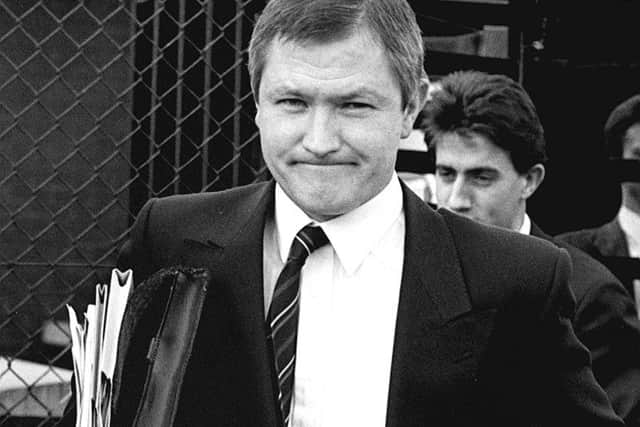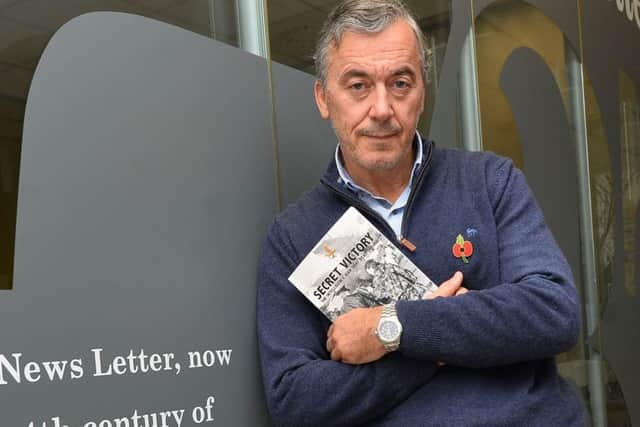The NIO's proposed new legacy bodies might help Sinn Fein re-write history of Troubles


The great Sinn Fein re-write, reverse engineer blame to purify the Provos, began. But how it reads and what it takes to produce is vulnerable to the facts. Propaganda always is.
In the Troubles, the state committed 10% of killings, almost all of them lawful, and terrorists 90%, all of them murders.
The biggest protagonist by far, at 60%, was the Provos.
Advertisement
Hide AdAdvertisement
Hide Ad

So, for three old soldiers being prosecuted, fairness is 27 alleged terrorists, 18 of them Provos, in the dock.
There are three, two loyalists and a republican.
When Theresa May spotlighted the issue, many disagreed.
They argued legacy was balanced, based on a PSNI statistic of 1,188 investigations, of which 801 are terrorist murders.


Yet, even here, a third of the cases, as opposed to a tenth, are against the state.
Not that her critics showed such or that the PSNI element is only a fraction of a large and diverse legacy project.
Advertisement
Hide AdAdvertisement
Hide AdThe first body set up was the Police Ombudsman. It exclusively examined the RUC.
Retired officers lost confidence in it because of a republican slogan — ‘collusion’ — to define criminality.


How the Ombudsman used the ‘c’ word was recently ruled unjust in a judicial review.
In 2005 the HET was created to look at all Troubles killings.
Advertisement
Hide AdAdvertisement
Hide AdIt, however, closed after a report by a local academic criticised it for favouring cases involving security forces.
These would be examined again.
In 2014 the PSNI legacy unit took on the outstanding caseload.
Sinn Fein said it would not have the public confidence.
The victims groups I know have few PSNI reports.
The unit seems consumed with cases like ‘Bloody Sunday’ after a decade-long inquiry at £195 million, Military Reaction Force following a BBC documentary and on-the-runs.
One HET report I read was for William Heenan, an innocent Protestant civilian.
Advertisement
Hide AdAdvertisement
Hide AdIn 1985 William was at home with his 12-year-old son Samuel, when a gunman pounced.
It was a Friday at 7am. William was forced to his knees and shot twice at point blank range, in the top of the head and in the back of the neck.
The boy ran frantically to help his father and then to a neighbour half a mile away.
William was a digger driver. The Provos claimed responsibility. They said William was in the RUC. It was a lie.
Advertisement
Hide AdAdvertisement
Hide Ad“In the past 18 months” the News Letter wrote at the time, Samuel’s “grandmother and mother died within three months of each other, and yesterday” when a terrorist shot his father. He “was left an orphan”.
A ‘say nothing’ culture stopped people giving statements. The killer left no forensic clues at the scene. Suspects denied involvement or kept quiet and the chance of a confession was zero. This was the norm. No one was prosecuted.
It is even worse today. The family’s MP does not regard it murder or even wrong.
And terrorists did not keep records and do not give out names.
Advertisement
Hide AdAdvertisement
Hide AdThe report on William was a review, not an investigation, and in my opinion a pretty poor one, not that the family and others like them will get another.
In contrast, cold cases against the state produce new witnesses and the disclosure of documents and identities of security forces.
By the way, I am not suggesting police or soldiers are not prosecuted where evidence exists to warrant such, but bias in legacy is blatant as much as it is brazen.
Mr Heenan’s report is 22-pages. The documentation page-count in the Stevenson report against the security forces into the killing of Patrick Finucane, an innocent Catholic civilian murdered by loyalist terrorists in front of his family, is one million.
Advertisement
Hide AdAdvertisement
Hide AdWilliam’s file fills a Pollypocket. Patrick’s would fill a city hall.
Inequality is in-built in legacy. Inquests are exclusive to state killings, including armed terrorists engaged in murders. Almost every public inquiry examined the security forces.
Two ‘supergrass’ trials involved the ‘c’ word. Neither involved republicans.
The latest may prosecute two retired police officers. A generous legal aid system funds civil claims against the state. It goes on...
Advertisement
Hide AdAdvertisement
Hide AdIf Mr Heenan’s report is typical, and I believe it is, roughly 3,000 terrorist murders in the Troubles are outrageously overshadowed by the documentation, length and cost of just one that probes the state — the murder of Pat Finucane.
The biggest protagonist in the Troubles has been the biggest beneficiary of the peace. Murderers in prison were released. Others got amnesties. Any prosecuted after 1998 for Troubles atrocities would serve a maximum of two-years.
Terrorists and their rancid ideology entered government with no protection put in place for the families of the people they murdered and security forces they hated.
Legacy has hidden the hypocrisy and horror of the Provos to a point that it is hard to expose. And given the NIO proposals on the past, it may well get worse.
The great re-write is far from finished.
• Dr William Matchett is author of Secret Victory: The Intelligence War that Beat the IRA and Adjunct Fellow at the Edward M Kennedy Institute for conflict prevention, Maynooth University, Ireland